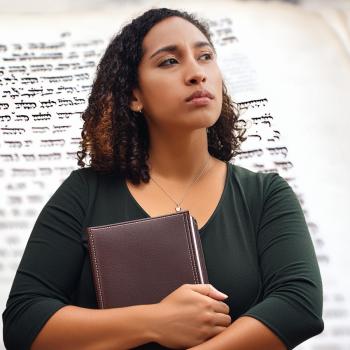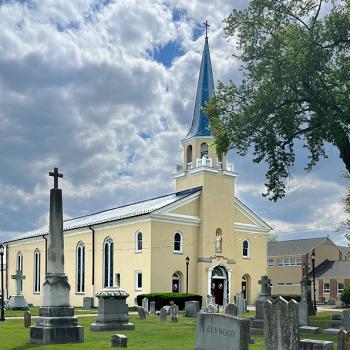[Note: this article is slated to run in the Denton Record Chronicle on Friday, July 24, 2015. Further commentary on the nature of “orthodoxy” can be found here.]
The liturgy is confusing, unfamiliar, mostly chanted or sung without recognizable tunes and half in a foreign language. The overly-incensed air produces an immediate headache. We stand for most of the two-hour service, rarely enjoying the minimal comfort of the unpadded wooden pews. Instructions make it clear we are not welcome at communion. Research before attending confirms that the denomination is fully male-dominated and it would also be wise to take special care with attire, keeping it modest and dressy.
These factors normally lead to a “what a miserable morning” response. But as we walk out of the Divine Liturgy on Sunday morning at Holy Trinity Greek Orthodox Church in Dallas (http://www.holytrinity.info/wordpress/), we comment, “We have indeed worshipped today. This was not about us or getting rich or some superstar pastor. It was about God.”
Quick historical background: The Orthodox Church claims about 225 million adherents worldwide and somewhere between two and three million in the US. The Orthodox and the Roman Catholic Church were one entity until 1054 when the Giant Schism occurred. The primary points that drove the division were the Roman claims to a universal papal supremacy and their insertion of the “filioque clause” into the Nicene Creed.
The Orthodox Church claims to have changed nothing since the formation of basic Christian doctrines in the fourth century. An explanation of Orthodoxy boldly states, “Built on the foundation of Christ and His Apostles, our faith has had nothing added to it, and nothing can be added. It is complete.”
Depending upon the primary nationality of the gathering, Orthodoxy can be called “Greek” or “Russian” or “Bulgarian” or “Georgian” or whatever, but worship remains the same. At Holy Trinity, Sunday morning begins at 8:15 am with the Orthros, also known as Matins.
We arrive about 9:10 in plenty of time for the 9:30 Divine Liturgy, an approximately two hour service although there is no actual break to mark the end of one part and the beginning of the other. The Orthodox describe this time as an all-inclusive act of prayer, worship, teaching, and communion of the entire Church in heaven and on earth.
A knowledgeable and kind greeter approaches as we sign the visitor’s register. She immediately helps us with a basic understanding of what to expect as the morning progresses. She notes that few are present for this first part of the service, but that the space always gradually fills before communion. She also expresses dismay that so many routinely come in late–laughingly declaring that many function on “Greek time.”
We first admire the chapel and the lovely icons there, then enter the light, elegant, columned worship center, walking on stone floors to one of the center pews. After we settle ourselves, another greeter joins us to give further guidance. The worship books are in both Greek and English. Although rusty, I read Greek and quickly find my sea legs as the chants, songs and prayers swing seamlessly between the two languages.
We observe other worshippers, standing, kneeling, sitting and crossing ourselves as they do. Mostly though, we simply give ourselves over to the flow, letting ourselves be carried in this historic liturgy.
Fr. Peter Kostakis, the assistant priest, offers a short and well-delivered homily from Matthew 5:14-19. He reminds us that we are both gifted and instructed to obey the commandments, even the least of them. Several times he exhorts us to overcome our individualities and to find our higher call to be in communion with others, with creation, with God. A sense of the holiness of all of life, with no division between sacred and secular, pervades his message.
Tradition and a sense of the Holy Presence guides each step. Extreme care is taken as to who may and may not enter the Sanctuary, the place behind the iconostasis where the Altar sits holding the communion elements. The priest and deacon process the elements through the church. A robed liturgist who walks backward leads the procession. Every person turns and follows the path. No back should ever be turned toward the bread and wine.
We watch as the several hundred who eventually fill the church come forward for communion. Multiple children line up with their parents and grandparents. There is no Sunday school for little ones or a segregated time and place for teens. They are to be in worship with their families from their earliest ages. Many teens serve as worship leaders. Ideally children learn to come fasting by the time they are seven.
There is little compromise here with today’s culture. No debates over doctrine, No shortened services although clearly people come when they want. Although this church did have pews for the brief period when worshippers can sit, many Orthodox churches have only space for standing with a few benches scattered around for the less bodily abled.
Learning Greek (or whatever the primary language) would be more than helpful to fully engage in worship. No screens, no band, no popular music. Although this church has an organ and choir, they unobtrusively support worship from the back balcony so all attention stays on the altar and the liturgy, the communal work of the people in worship.
The Orthodox are also one of the fastest growing denominations in the US. I found it a beautiful melding of heaven and earth.












